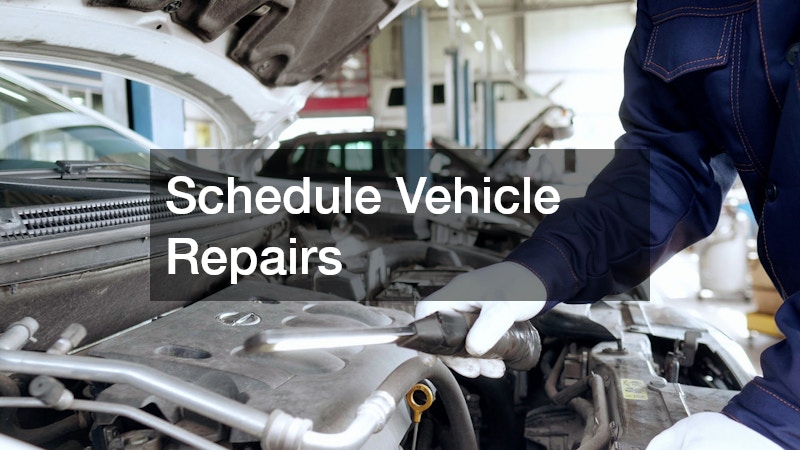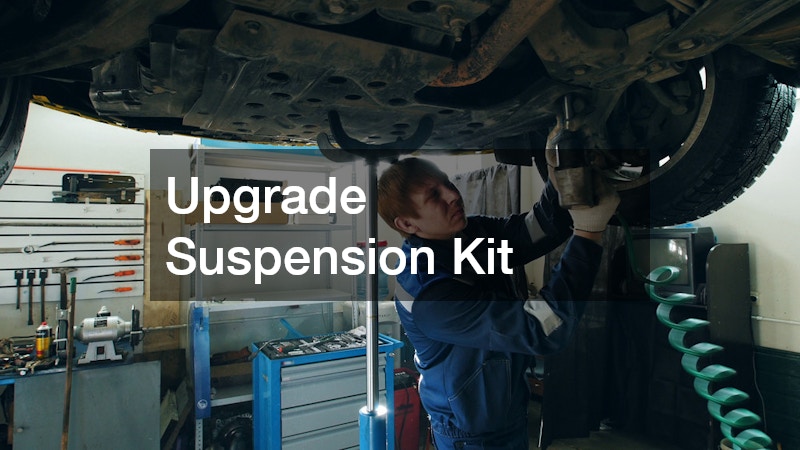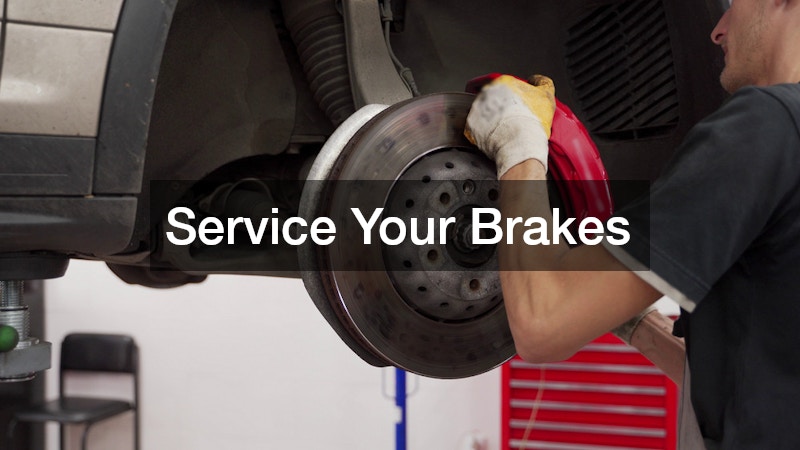Winter presents various challenges for drivers, from slippery roads to visibility issues. Preparing for winter is crucial to ensuring safety and performance when temperatures drop. As the cold weather approaches, many drivers begin to consider what steps they should take to keep their vehicles ready and roadworthy. This article will outline ten essential actions every driver should consider to prepare for winter, covering aspects like emissions testing, repairs, dealer consultations, and more. These steps not only enhance vehicle safety but also improve its operational efficiency, making winter driving less daunting. As we explore each topic, remember that preparation is key to navigating winter conditions successfully.
Check Emissions Early
With the onset of colder weather, it’s vital to ensure your vehicle’s emissions system is functioning correctly. Too often, car owners neglect the importance of early emissions testing, which can lead to unexpected issues when winter is in full swing. By prioritizing car emissions testing, you reduce the risk of mid-season breakdowns and comply with environmental regulations. An efficient emissions system not only minimizes pollution but also enhances fuel efficiency, which is crucial during the energy-demanding winter months.
Car emissions testing can be conducted at various certified locations. It’s advisable to find a reputable service center to ensure your vehicle meets the required standards before the harsh winter conditions set in. These tests check for the proper functioning of key components such as the catalytic converter, oxygen sensor, and exhaust system, which can affect the car’s performance if malfunctioning. Any issues identified during the test can be addressed immediately, so the vehicle remains at peak performance throughout the winter.
Besides ensuring compliance with emissions regulations, early testing can also highlight potential problems before they escalate. Discovering and solving any issues with the car emissions testing can prevent costly repairs and inconvenient breakdowns during the cold season. Taking the proactive step to have your emissions checked means you’re not just preserving your vehicle’s integrity but also contributing positively to environmental conservation efforts.
Schedule Vehicle Repairs

Winter driving conditions make it essential to perform any overdue car repairs before they become problematic. Snow, ice, and freezing temperatures can exacerbate minor vehicle issues, leading to costly or dangerous situations on the road. Whether it’s a lingering oil leak, a malfunctioning heater, or a worn-out suspension, having these addressed by a professional mechanic ensures your vehicle is winter-ready.
Consider scheduling an inspection where a mechanic can identify any immediate car repair needs. Common repairs that become crucial during the winter include checking the battery, replacing old oil with a winter-grade option, and inspecting brakes for wear and tear. Your mechanic can also top off or replace key fluids such as coolant and windshield wiper fluid, which are critical to maintaining visibility and engine performance.
An effective car repair strategy involves not only addressing current issues but also preventative maintenance. Even if no apparent problem exists, getting a tune-up can reveal hidden concerns that can compromise your safety during winter travels. Regular maintenance and prompt repairs extend the lifespan of your vehicle and enhance its reliability on icy roads.
Consult Your Dealer
As winter approaches, consulting your used car dealer can provide insights into any adjustments your vehicle might require for optimal winter performance. Used cars, due to their varying previous histories, might have specific needs or recommendations based on past maintenance records. Dealers often possess detailed knowledge about model-specific winter issues and can suggest necessary parts or accessories that improve performance and safety.
A used car dealer can also inform you about manufacturer recalls or software updates that might be pertinent to your vehicle. This ensures any underlying problems, such as software glitches in the vehicle’s system, are solved before they escalate into bigger issues in colder conditions. Taking your vehicle to the dealer before winter is an opportunity to have the car thoroughly checked using advanced diagnostic tools that might not be available at conventional garages.
Moreover, used car dealers often offer specialized winter preparation packages that include services like tire checks, heating system assessments, and battery inspections. Utilizing these services from a knowledgeable dealer ensures your vehicle is ready to face winter challenges, reducing the likelihood of breakdowns and increasing overall driving confidence.
Keep Tow Help Ready

No one wants to think about needing a tow, especially in the winter, but being prepared can save a lot of stress. Ensure you have towing services contact information readily available, as the likelihood of needing assistance increases with more adverse driving conditions. Snowstorms and icy terrains often result in vehicles getting stuck or breaking down, situations where having immediate access to towing services can make all the difference.
It’s advisable to research and identify reputable towing services in your area before the winter weather hits. Knowing in advance who to call ensures you won’t be left scrambling during an emergency situation. Many insurance policies include roadside assistance that can be incredibly helpful during winter; double-check to see if yours offers towing services.
Preparation is more than having a towing number on hand. Equip your vehicle with essential items such as a tow rope, jumper cables, and basic repair tools to assist yourself temporarily until professional help arrives. These proactive measures can minimize the delays and dangers associated with winter roadside emergencies.
Inspect Truck Alignment
For those with larger vehicles or trucks, ensuring proper truck alignment is a key step in winter preparation. Misaligned wheels can cause uneven tire wear, steering issues, and reduced handling—all of which are further complicated by winter conditions. Regular inspection and alignment of your truck’s wheels contribute significantly to safer and more efficient winter driving.
Conducting a thorough truck alignment check before temperatures plummet ensures that any alignment issues are detected and corrected. Misaligned trucks may drift or pull, necessitating constant steering adjustments which are risky on slippery or icy roads. A qualified technician can perform these adjustments to enhance vehicle stability and steering response, ensuring better control on winter roads.
Beyond safety, proper truck alignment aids in fuel efficiency by reducing the resistance created by misaligned wheels. With fuel consumption often spiking in colder months due to increased use of heating systems and longer engine start times, optimizing alignment ensures your vehicle operates as efficiently as possible, conserving fuel and minimizing costs.
Upgrade Suspension Kit

Winter roads are tough on vehicle suspensions due to the potholes and rough terrain created by freezing and thawing cycles. Investing in a suspension lift kit can significantly enhance your vehicle’s ability to navigate these challenging surfaces. A suspension lift provides additional height, which protects the undercarriage from damage and allows easier navigation over snow-covered areas.
For those living in areas with severe winter conditions, upgrading to a robust suspension lift kit is a worthwhile consideration. These kits can improve traction on snowy or icy roads and offer the added benefit of improved vehicle clearance. This is especially beneficial for trucks and SUVs that may require additional support during the winter months.
Furthermore, a suspension lift kit can enhance a vehicle’s ability to handle unexpected winter obstacles, ensuring safer travels. Whether it’s an unexpected snowdrift or an unevenly iced-over surface, having a high-performance suspension system can provide the confidence needed to face unpredictable winter roads. Regular maintenance and upgrades are crucial to ensuring vehicle readiness and safety.
Replace Worn Shocks
Worn shocks can dramatically affect a vehicle’s control and ride comfort, both of which are crucial when driving on slippery or uneven winter roads. Shocks play a vital role in maintaining tire contact with the road, which is critically important for braking and handling. Shock replacement at the first sign of wear can greatly enhance vehicle stability during winter months.
Signs that you may need shock replacement include excessive bouncing, nose-diving when braking, or noticeable vibrations. Addressing these symptoms promptly ensures that your vehicle maintains optimal handling dynamics, which is crucial when navigating icy or snow-filled terrains. This ensures safer and more predictable driving during the challenging winter conditions.
Replacing worn shocks before winter not only improves safety but also enhances ride quality, which can make a significant difference during long winter journeys. Besides the immediate safety benefits, new shocks also help preserve other vehicle components by reducing the stress on them, ensuring a smoother and longer-lasting performance throughout the winter season.
Service Your Brakes

Brake efficiency is paramount during winter driving, where stopping distances can be greatly increased due to wet, icy surfaces. Ensuring your brakes are in top condition before winter arrives is non-negotiable for safe driving. Regularly visiting a brake shop to have your brakes inspected can prevent accidents and ensure that your vehicle stops promptly and effectively.
During a brake service, technicians will check for worn pads, leaky brake lines, and proper fluid levels. Each of these components is essential to the overall functioning of the brake system, particularly in colder temperatures where brake performance can be compromised. Replacing worn brake pads and ensuring adequate fluid levels can make significant differences in safety when roads are less predictable.
Furthermore, conducting a comprehensive brake service before winter also provides an opportunity to update brake components with winter-appropriate materials if necessary. Good quality brakes ensure maximum friction and proper functioning, reducing the likelihood of skidding or prolonged stopping distances. Ensuring your vehicle’s braking system is winter-ready provides peace of mind and enhances safety for all road users.
Prepare for Collisions
Despite taking all preventive measures, the risk of accidents increases during winter due to more challenging driving conditions. Preparing for potential collisions involves ensuring your vehicle’s safety systems are fully operational and understanding collision repairs that may be required. Investing in equipment like snow tires and ensuring your airbags and sensors are functional increases crash protection levels.
Collision repairs might seem daunting, but choosing the right service center can make the process more manageable. Before winter, research repair shops that specialize in collision repairs for proficient handling of any post-accident scenarios. Long-standing services with good reputations often have experienced technicians that can restore your vehicle to pristine condition.
Besides repairs, preparation involves understanding the insurance implications and ensuring adequate coverage. Check your policy details to confirm you are covered in winter-specific scenarios such as skids or impact due to icy conditions. Adequate coverage and a reliable repair plan ensure you are prepared financially and logistically in the unfortunate event of a winter accident.
Know Legal Options
The presence of snow and ice increases the likelihood of traffic incidents and, consequently, legal implications for drivers. Knowing your legal options—including seeking the counsel of an auto accident attorney—can be a crucial part of winter driving preparedness. Attorney services can guide you through the complexities of accident claims, liability determinations, and insurance disputes.
An auto accident attorney specializes in representing victims or those accused in traffic incidents to ensure fair treatment and resolution. Proactively identifying a reliable attorney before winter strikes ensures that you have immediate professional access should an accident occur. Timely legal advice is invaluable, especially when navigating intricate legal systems under the stress of winter-related accidents.
Moreover, knowing your legal standing in case of accidents helps in making informed decisions, from ensuring thorough documentation at the scene to understanding negotiation processes with insurance agencies. Being prepared legally provides a measure of comfort and ensures financial and emotional protection during the unpredictable winter season.
Winter presents unique challenges that require drivers to be proactive about vehicle maintenance and safety. Taking measures such as scheduling car emissions testing, securing reliable towing services, aligning trucks, and ensuring brakes are serviced can significantly mitigate the risks associated with winter driving. Each step, from upgrading suspension systems to consulting used car dealers and preparing legally for potential accidents, adds a layer of readiness that promotes safety and confidence.
These ten steps discussed provide a conclusive guide to preparing for winter’s challenges, touching on essential checks and services that enhance vehicle performance and safety. Beyond vehicle maintenance, being ready for winter also involves considering potential incidents and outlining a response strategy that includes legal and repair options. This comprehensive approach not only protects the vehicle but also ensures the safety of drivers and their passengers throughout the harshest months of the year. Stay proactive, follow these guidelines, and enjoy a safer, smoother winter driving experience.

